Containerization
Workshop
- Press O or Escape for overview mode.
- Visit this link for a nice printable version
- Press the copy icon on the upper right of code blocks to copy the code
Welcome!
Classroom "rules":
- I am here for you!
- Every question is important
- Help each other
Introductions
Tell us about yourself:
- Name
- Pronouns
- Location
- Programming/Web experience
- What interests you about containerization?
- What is the coolest/weirdest/cutest animal? 🐍
Today's agenda

- Intro to Containers
- Containerizing Flask
- 👩🏾💻 Exercise: Run a container
- Databases in containers
- 👩🏼💻 Exercise: Run multiple containers
- Deploying a container
- 👩🏻💻 Exercise: Deploy a container app
Prerequisites
Option 1: Online development with Codespaces:
Option 2: Local development with VS Code
Option 3: Local development
- Code editor
- Docker Desktop
Docker
Docker overview
The Docker engine runs multiple Docker containers, where each container is an isolated environment.
Docker overview example
Each container can be a very different environment, with binaries and libraries dependent on the application.
Why Docker?
- Environment consistency: Ensure that the developer environment, test environment, staging environment, and production environments are the same.
- Application portability: Easy to run the application on new hardware if old hardware fails or if application needs to scale.
- Efficient hardware use: A machine can run multiple containers to make optimal use of its resources.
Docker images
A container image is a software package that includes
everything needed to run an application.
A container is a running instance of a container image.

Docker images
Multiple containers can be run from the same image.

Image registries
A registry is a place to store and share images.
Commonly used image registries:
- Docker Hub: contains many images, including official images for python, postgres, Unix systems, etc.
- GitHub container registry
- Azure container registry
- AWS container registry
- Google Cloud container registry
Image layers
A container image often starts off with a base image, and then adds layers on top of it.
For example:
- Base image: Ubuntu 20.04
- Layer 1: Python 3.9
- Layer 2: Flask 2.0
- Layer 3: Your app
Docker can cache each layer, which improves performance.
Productionizing
Flask apps

Sample Flask app

from flask import Flask, render_template, request
app = Flask(__name__, template_folder='templates', static_folder='static')
@app.route('/')
def index():
return render_template('index.html')
@app.route('/hello')
def hello():
return render_template('hello.html', name=request.args.get('name'))
👀 Demo: flaskcontainer-jd5m-containerapp.graymoss-ba9f7d1d.centralus.azurecontainerapps.io
👩🏼💻 Code: github.com/pamelafox/simple-flask-server-container
Running Flask app locally
Using the built-in Flask server:
python3 -m flask run --port 50505 --debug
⚠️ The dev server is not recommended for production use.
Running Flask with gunicorn
Gunicorn is a production-level server that can run multiple worker processes.
Add gunicorn to requirements.txt:
Flask==2.2.3
gunicorn==20.1.0
Use gunicorn to run Flask app with multiple workers:
python3 -m gunicorn app:app --workers 4 --bind 0.0.0.0:50505
Configuring gunicorn
Gunicorn can be configured with a gunicorn.conf.py file:
import multiprocessing
max_requests = 1000
max_requests_jitter = 50
log_file = "-"
bind = "0.0.0.0:50505"
workers = (multiprocessing.cpu_count() * 2) + 1
threads = workers
timeout = 120
The run command can be simplified to:
python3 -m gunicorn app:app
Containerizing
Python apps

Containerization steps
- Write a Dockerfile
- Build image from Dockerfile
- Run container using built image
Dockerfile format
A Dockerfile includes:
| The base or parent image* | FROM python:3.11
|
| Additional software | RUN pip3 install Flask gunicorn
|
| Application code | WORKDIR /codeCOPY . .
|
| Services to expose (storage/network) | EXPOSE 50505
|
| Command to run upon launching container | ENTRYPOINT ["gunicorn", "-c", "gunicorn.conf.py", "app:app"]
|
*Find existing images in registries, like DockerHub.
Dockerfile for Flask
A complete file:
FROM python:3.11
WORKDIR /code
COPY requirements.txt .
RUN pip3 install -r requirements.txt
COPY . .
EXPOSE 50505
ENTRYPOINT ["gunicorn", "-c", "gunicorn.conf.py", "app:app"]
📖 Learn more: Docker images layer and cache
Add a dockerignore file
Prevent unnecessary files from being copied to the image:
.git*
.venv/
**/*.pyc
__pycache__/
Building the image
Using the docker build command:
docker build --tag flaskapp .
Using the VS Code Docker extension:
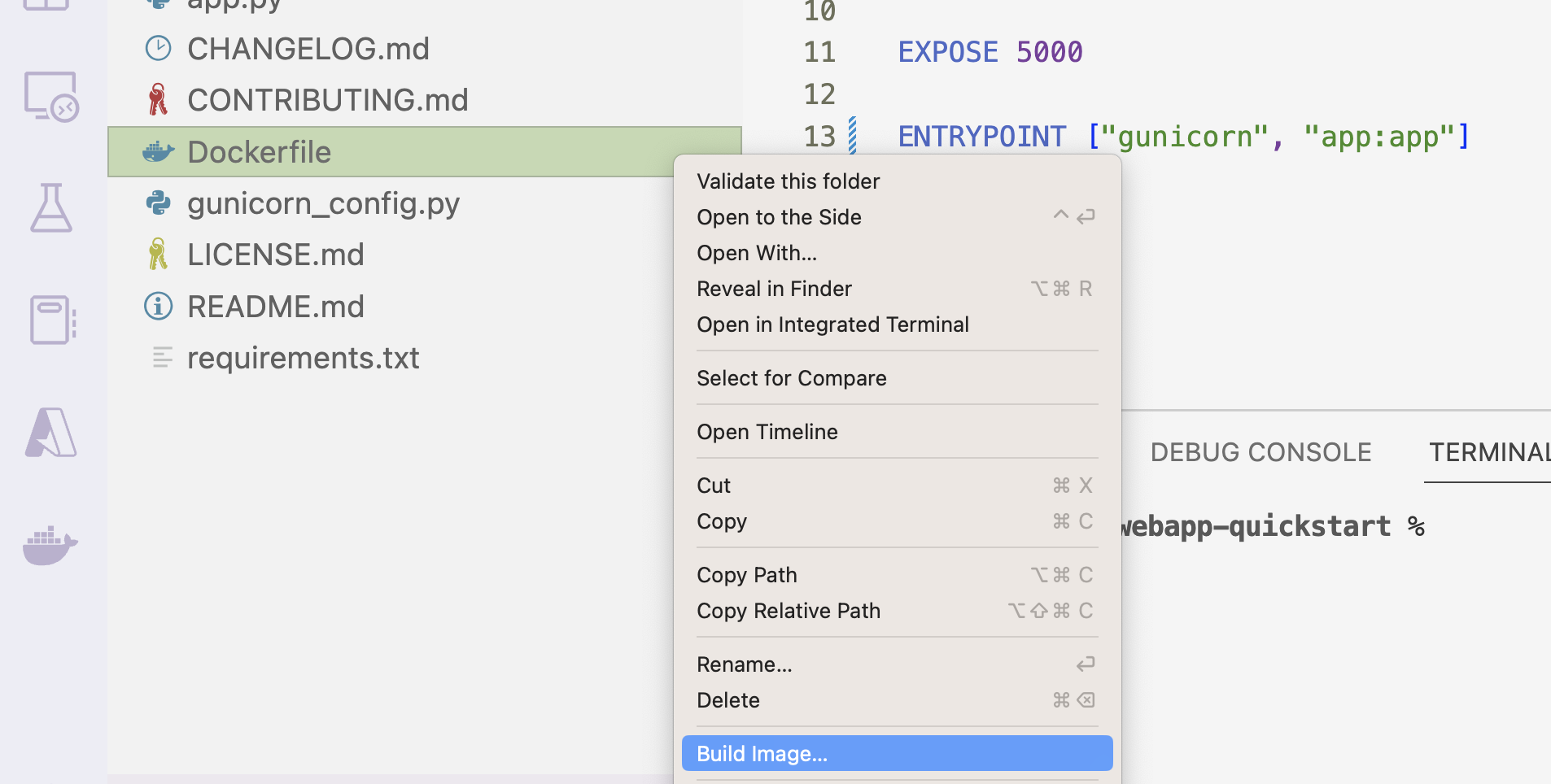
Running the container
Using the docker run command:
docker run --publish 50505:50505 flaskapp
Using Docker Desktop:
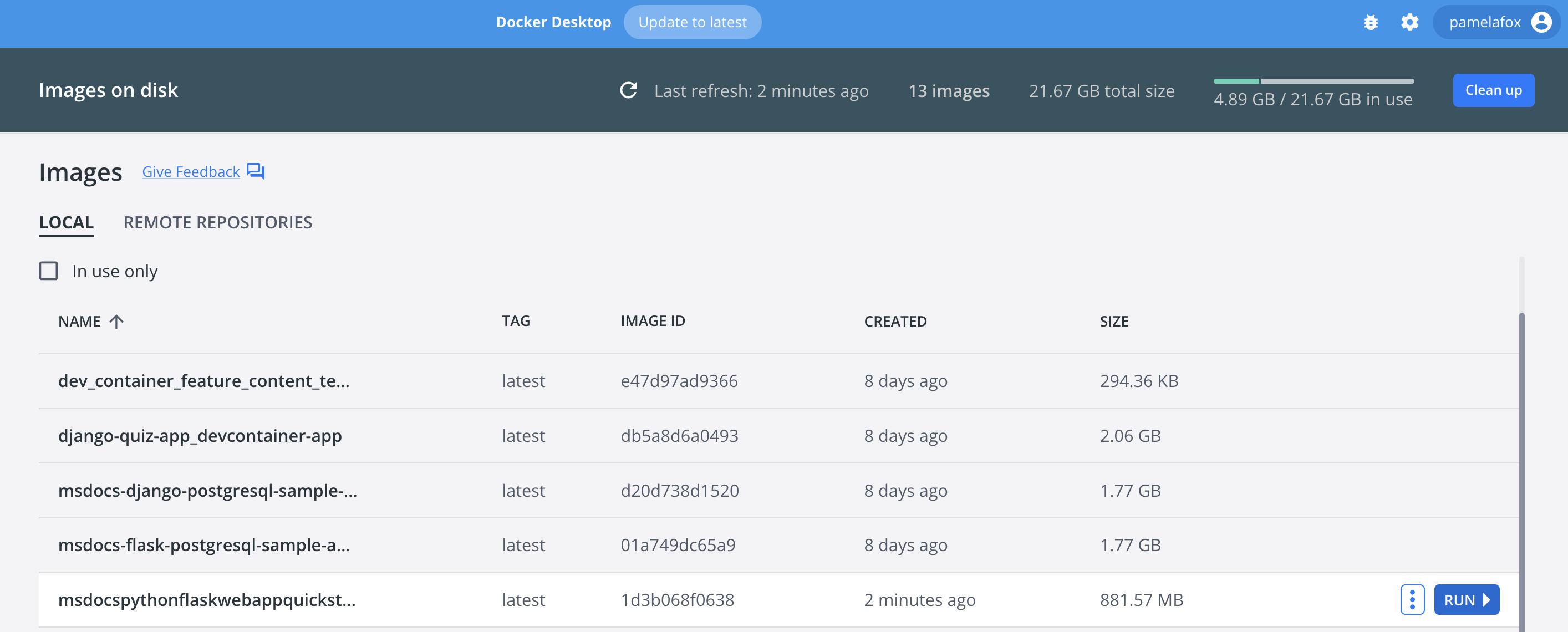
You can also use the VS Code Docker extension to run containers.
Exercise: Run a container
Starting from this repo:
github.com/pamelafox/simple-flask-server-container
- Follow the Local development with Docker steps.
- Try changing the base image to a higher Python version number and re-building / re-running.
- Try changing the HTML code and re-building / re-running.
🙋🏼♀️🙋🏾♀️🙋🏽♀️ Let us know if you need any help! 🙋🏻♀️🙋🏽♂️🙋🏿♀️
Databases in containers
Sample Flask app with DB

...
@app.route('/surveys', methods=['GET'])
def surveys_list_page():
surveys = Survey.query.all()
return render_template('surveys_list.html', surveys=surveys)
@app.route('/surveys/', methods=['GET'])
def survey_page(survey_id):
survey = Survey.query.where(Survey.id == survey_id).first()
answers = Survey.query.where(Answer.survey==survey_id)
return render_template('survey_details.html', survey=survey, answers=answers, already_voted='survey_id' in request.cookies)
...
👀 Demo: flasurveycon-b2ikkm-ca.ashysea-c408c9d0.eastus.azurecontainerapps.io/surveys
Data persistence in containers
Data can be written to a container's file system, but:
- Removing a container removes the data
- Container data is difficult to move between environments
- Container storage drives are less performant
If you need to persist data, you should store it outside the container.
Docker volumes
A volume is a directory on the host machine that is mapped to a directory in the container.
When developing with databases locally, use a volume to store the data for the database.
Running PostgreSQL with Docker
Create a volume:
docker volume create postgres-data
Create a network for the containers to communicate over:
docker network create postgres-net
Run a PostgreSQL container with the volume and network:
docker run --rm -d -v postgres-data:/var/lib/postgresql/data \
--network postgres-net --name db \
-e POSTGRES_USER=app_user -e POSTGRES_PASSWORD=app_password \
postgres
Connecting the app to the DB
Set environment variables for the database connection:
DBHOST=db
DBNAME=postgres
DBUSER=app_user
DBPASS=app_password
Build the container:
docker build --tag flasksurveyscontainerapp .
Run the app container over the same network:
docker run --rm -d --network postgres-net \
--name flask-db-app -p 50505:50505 \
flasksurveyscontainerapp
Docker compose
Docker compose is a tool for defining and running multi-container Docker apps,
and docker-compose.yaml is a YAML file that defines the services that make up your app.
services:
db:
image: postgres
restart: always
environment:
POSTGRES_PASSWORD: ${DBPASS:?database password not set}
POSTGRES_USER: ${DBUSER:?database user not set}
POSTGRES_DB: ${DBNAME:?database name not set}
volumes:
- postgres-data:/var/lib/postgresql/data
healthcheck:
test: ["CMD-SHELL", "pg_isready -U ${DBUSER} -d ${DBNAME}"]
interval: 5s
timeout: 5s
retries: 5
app:
build:
context: .
ports:
- 50505:50505
depends_on:
db:
condition: service_healthy
volumes:
postgres-data:
Run multiple containers
Run the app and database containers:
docker-compose up
Exercise: Run multiple containers
Starting from this repo:
github.com/pamelafox/flask-surveys-container-app
- Follow the Local development with Docker steps.
- Make a survey in the app.
- If you're in Codespaces, change the visibility of port 50505 to "Public" and share the URL of your survey with classmates.
🙋🏼♀️🙋🏾♀️🙋🏽♀️ Let us know if you need any help! 🙋🏻♀️🙋🏽♂️🙋🏿♀️
Hosting containers
on Azure!
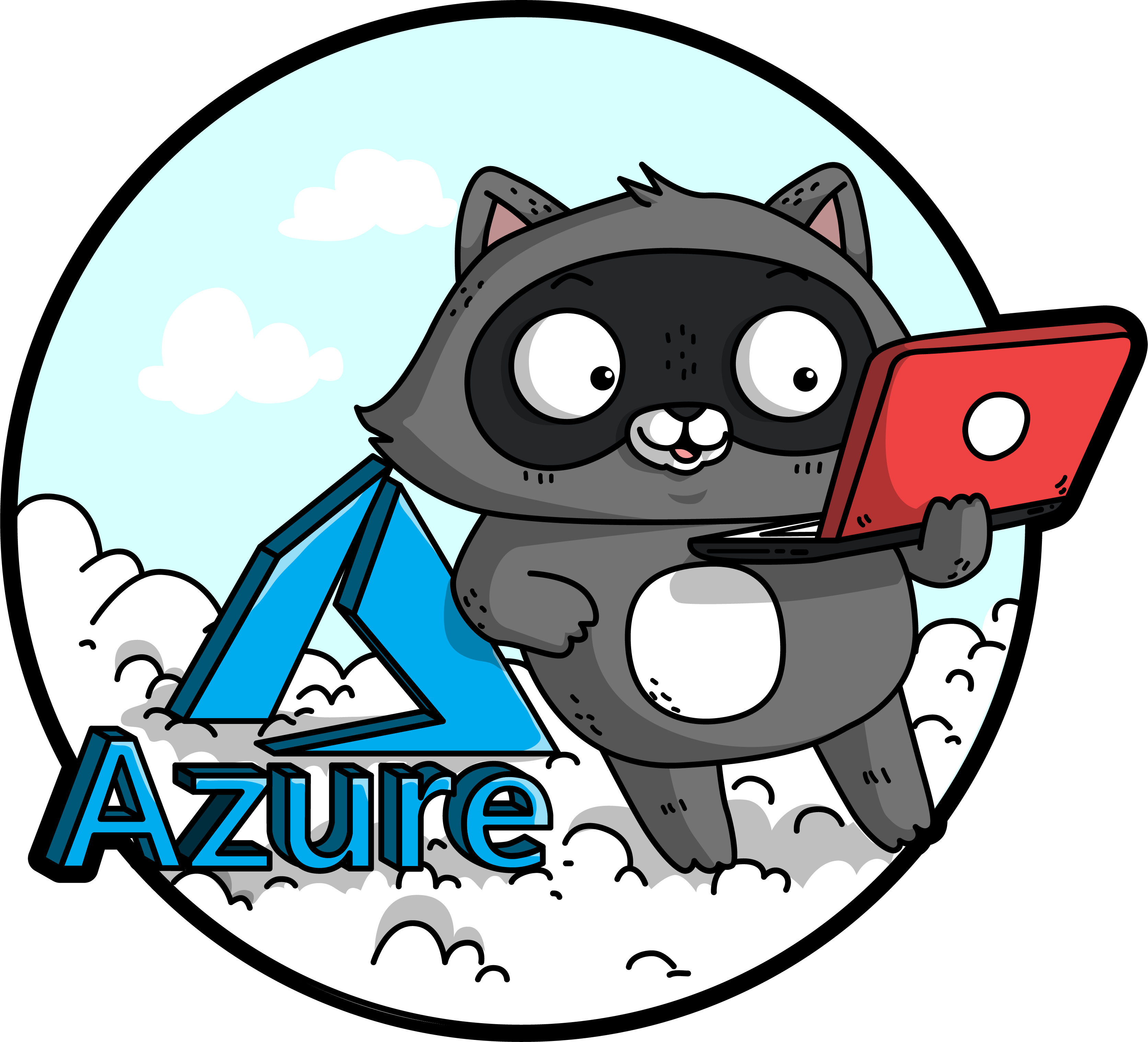
Hosting considerations
- How much traffic do you expect?
- Do you need scale-to-zero?
- How variable will the traffic be?
- How much control do you need over the environment?
Azure hosting options
| Cloud | Azure | |||
|---|---|---|---|---|
| Environment | Containers | PaaS | ||
| Azure Kubernetes Service | Container Management | Azure App Service | Serverless | |
| Azure Container Apps | Azure Functions | |||
For hosting containers, Kubernetes Service, Container Apps, and App Service are all good options.
Storage in container apps
For temporary storage, you can write to file system or have an ephemeral volume in a container app.
For permanent storage, you can mount Azure Files but performance is too limited to be useful for a database.
Best approach for Azure:
Use a managed database service outside the container.
Azure managed databases services
These are just some of the options:
| Option | Description |
|---|---|
| Azure CosmosDB | Distributed database with multiple APIs, including MongoDB and Cassandra. |
| Azure Cosmos DB for PostgreSQL | Distributed database using PostgreSQL and the Citus extension. Can scale vertically and horizontally. |
| Azure Database for PostgreSQL – Flexible Server | Fully managed service with vertical scaling. |
Hosting on Azure Container Apps
A Container Apps Environment manages a Container App which pulls its image from an Azure Container Registry.
The Container App connects with the PostgreSQL server over the internal Azure network.
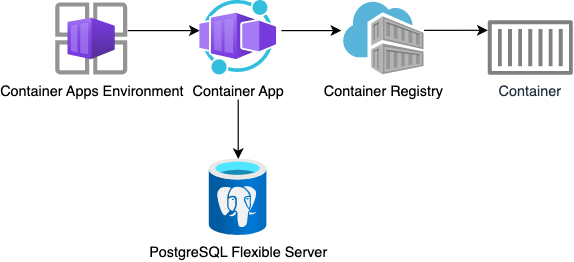
Deploying to Azure Container Apps
Using the Azure Dev CLI:
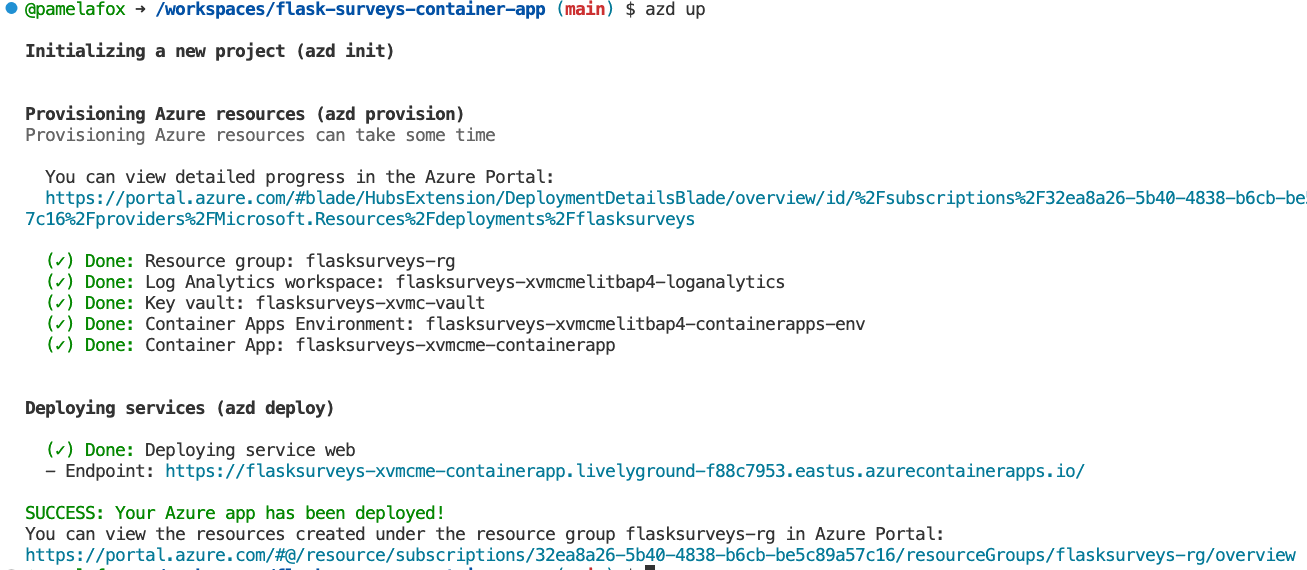
Exercise: Deploy a container app
Starting from this repo (or your fork):
github.com/pamelafox/flask-surveys-container-app
- Sign up for a free Azure account and create a subscription.
- Either open the project in Codespaces or follow these installation steps for the Azure Developer CLI.
- Follow the Deployment steps in the README.
- If it deploys successfully, share the endpoint URL with your classmates. If not, let us know about any bugs. 🪲
- Once you've verified the app is working, run
azd downto un-deploy the app.
🙋🏼♀️🙋🏾♀️🙋🏽♀️ Let us know if you need any help! 🙋🏻♀️🙋🏽♂️🙋🏿♀️
More resources
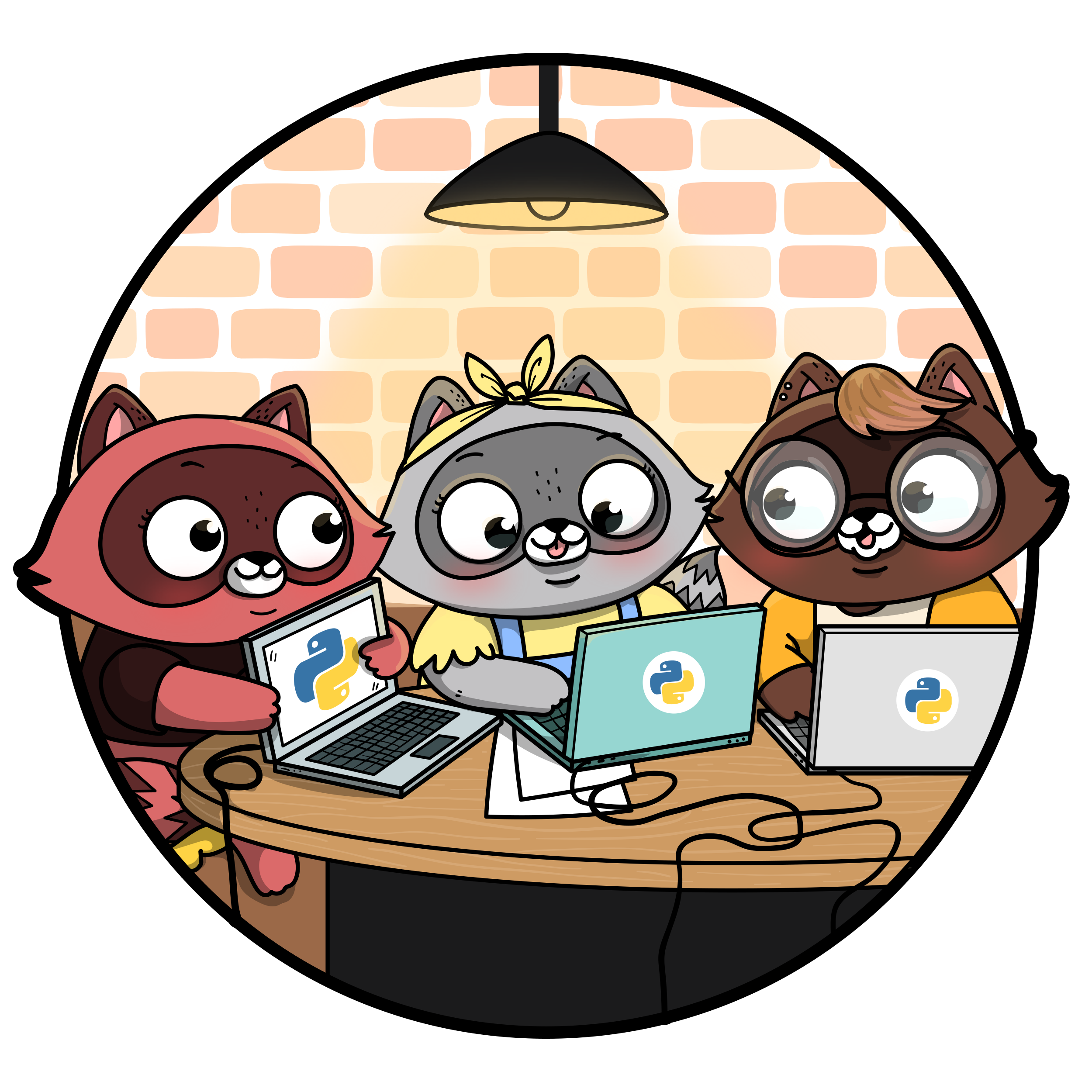
Any questions?
